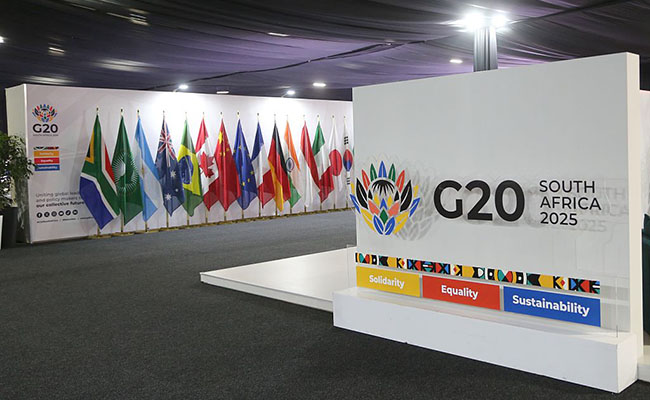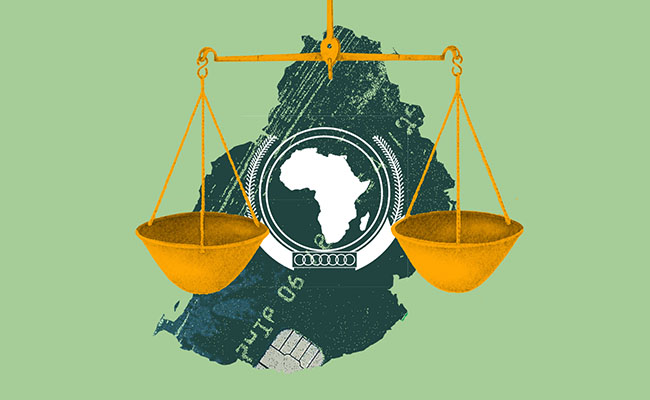For African countries staring much higher tariffs in the face following the possible scrapping of the African Growth and Opportunity Act (Agoa), many will be deepening their trade ties with China. But for Southern Africa, there is a problem: Eswatini.
Agoa is set to expire on September 30, upon its latest reauthorisation in 2015, and it is not clear whether it will be scrapped entirely or scaled back. But given the threat of sweeping new tariffs with US President Donald Trump’s protectionist approach, it seems unlikely it will survive in its current form, which allows a broad category of goods to enter the US tariff free.
In seeming retaliation, China announced in mid‑June that it will eliminate all import tariffs on goods from the 53 African nations it diplomatically recognises, which provides a huge opportunity for middle-income countries like Kenya, South Africa, Nigeria, Egypt and Morocco, as China’s previous tariff-free policy only applied to least‑developed countries.
But there is a snag – one country is specifically excluded: Eswatini. In his weekly newsletter, Agbiz chief economist Wandile Sihlobo says China’s decision to exclude Eswatini from potential trade benefits complicates South Africa’s standing, as the country can negotiate trade matters as part of the Southern African Customs Union (Sacu), which includes Eswatini. Botswana, Lesotho, Mozambique and Namibia are also part of Sacu.
“This ultimately means that the Chinese pronouncement cannot be viewed as an immediate potential avenue for South Africa’s agricultural exports,” he writes.
For Southern African countries, there are other problems too, he notes. For example, if you consider South Africa’s wine trade with China – countries like Australia and Chile have accessed the Chinese market with 0% preferential tariffs. Meanwhile, South African producers face import tariffs ranging from 14% to 20%. Moreover, South African macadamias face a 12% import tariff in China.
The main challenge is that South Africa does not have an agricultural trade agreement with China. Hence, competition has been challenging for the wine industry and a range of farm products. “But it is for this very reason that we believe it is appropriate for Brics countries to explore a possible agricultural trade agreement. We have singled out China here, but the same can be said about India, another major agricultural importer within Brics,” Sihlobo writes.
The Eswatini factor
China does not recognize Eswatini (formerly Swaziland) because it is the only African country that maintains formal diplomatic relations with Taiwan (Republic of China), rather than with the People’s Republic of China (PRC). Under Beijing’s strict “One China” policy, any country wishing to establish official ties with the PRC must sever diplomatic recognition of Taiwan.
For Eswatini, this will be a wrench; the kingdom has maintained a close relationship with Taiwan, including embassy exchange, consistent political support, and development aid and scholarships for Eswatini citizens.
But according to Donald MacKay, CEO of XA Global Trade Advisors, Eswatini’s membership of Sacu would not necessarily be a bar to member countries establishing an agricultural trade agreement with China.
When South Africa was negotiating a trade agreement with the EU, it did so at first without including its Sacu partners, he points out. The South Africa-EU trade agreement was first signed in 1999 and came into full force in 2004. The inclusion of Sacu countries into the agreement took place under the EU-Southern African Development Community economic partnership agreement only in June 2016.
Sihlobo points out that in the current world of trade fragmentation, one area the Brics countries should consider focusing on more in their deliberations this year is deepening intra-Brics trade. Currently, for example, South African agricultural exports to the Brics remain relatively low (at less than 10% of South African agricultural exports to the world, which are $13.7bn as of 2024).
“The Brics group is not a trade bloc, which partly explains our low agricultural penetration,” he says.
“However, this may be an opportune time to change this reality and explore a more ambitious agricultural trade arrangement that aims to address the low intra-trade challenge in agriculture within this grouping. What has proven to be a constraint in the past is not the low demand, but rather the relatively high import tariffs and some non-tariff barriers (phytosanitary barriers) within this group, which continue to distort agricultural trade.”
Top image: AI/Currency collage.
Sign up to Currency’s weekly newsletters to receive your own bulletin of weekday news and weekend treats. Register here.












